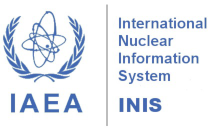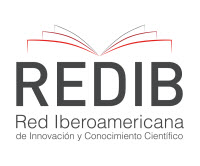New article published in 12(4A) - ENAN / INAC 2024
Application of WDXRF and EDXRF Spectrometry for Chemical Characterization in Oil Sludge using the Fundamental Parameter Algorithm
Abstract: Oil sludge is a waste product generated by the oil industry, comprising organic substances (primarily long-chain polyaromatic, aromatic, and aliphatic hydrocarbons), inorganic compounds (such as sediments and metallic and non-metallic oxides), water, and oil processing residues. Radionuclides from the 238U and 232Th decay chains can be present in oil sludge, which justifies its classification as naturally occurring radioactive material (NORM). The oil industry produces approximately 60 million tons of oil sludge annually. Given the continuous generation of this waste, the development of additional storage sites will be necessary, incurring substantial costs. Furthermore, the storage and transportation of oil sludge pose significant environmental contamination risks. Due to its complex and heterogeneous composition, establishing a standardized methodology for classifying oil sludge presents considerable challenges. The development of an effective methodology for the analysis and classification of oil sludge is essential for proper waste management, as well as for facilitating the creation of treatment and reuse alternatives. X-ray fluorescence spectrometry (XRF) emerges as a promising analytical technique for classifying oil sludge, enabling direct, non-destructive analysis, thereby reducing both waste and analysis costs. In this study, wavelength dispersive X-ray fluorescence (WDXRF) and energy dispersive X-ray fluorescence (EDXRF) techniques were compared to assess their performance in analyzing the major (1–100%) and minor (0.01–0.99%) constituents in oil sludge samples. The elements were quantified using the Fundamental Parameters (FP) algorithm. The objective of this work is to develop a methodology for determining both major and minor elements in oil sludge, contributing to a more effective management of this waste. Read full article.
Optimization of PSMA-I&T radiolabeling with 177Lu
Abstract: Prostate cancer (PCa) is the second most common type of cancer in men and the fifth cause of mortality worldwide. Metastatic prostate cancer is associated with a poor prognosis and decreased life expectancy. Prostate-specific membrane antigen (PSMA) is a type II transmembrane glycoprotein that is anchored in the epithelial prostate cell membrane, overexpressed in prostate cancer, increased in metastatic castration-resistant prostate cancer (mCRPC) patients and with a consensus that its expression level is correlated to the malignancy of the disease. 177 Lu-PSMA-I&T stands out as a promissor radiopharmaceutical for therapy of prostate cancer and currently is being described based on this specifically bind to PSMA with the Glu-urea-Lys pharmacophoric group. This present work aimed to determine the most favorable conditions for labeling PSMA I&T with carried-added lutetium-177, evaluating the influence of molar ratio, pH, temperature and reaction time, to obtain the radiopharmaceutical with high radiochemical purity (%RP ≥95%), avoiding the final purification step. The percentage of radiochemical purity was evaluated by High Pressure Liquid Chromatography (HPLC) and Thin Layer Chromatography on silica gel 60 plate (TLC-SG). The results obtained with this work made it possible to define and standardize the best condition for PSMA I&T radiolabeling with carried-added 177Lu. Read full article.






















